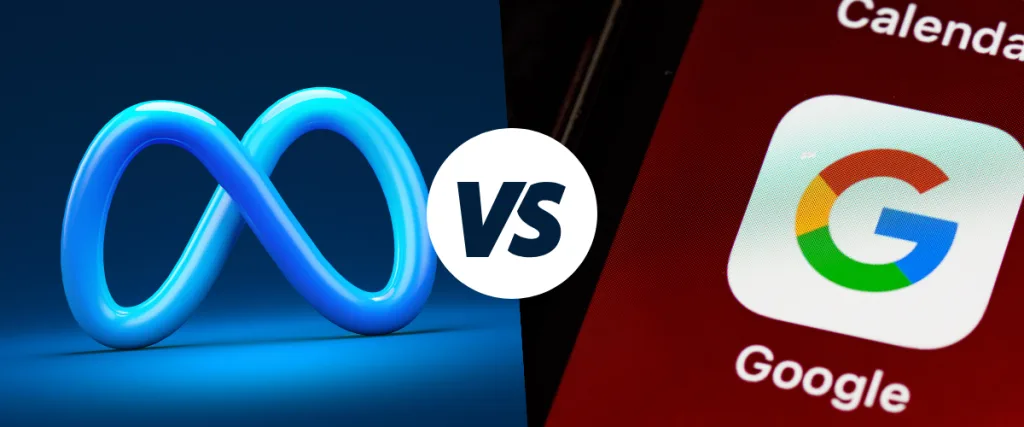
Meta Ads vs Google Ads: Which Performs Better in 2025?
Introduction
Digital advertising in 2025 isn’t about choosing a platform randomly — it’s about choosing the one that delivers performance, reach, and return.
Two giants dominate this space: Meta Ads (Facebook, Instagram) and Google Ads (Search, Display, YouTube).
Both have evolved massively over the years, leveraging AI, automation, and first-party data, making them more powerful — yet more complex — than ever before.
So, the big question remains:
Let’s break it down across key marketing parameters
1. Audience Targeting Capabilities
Meta Ads
Uses interest-based, behavioral, and lookalike audiences.
Leverages AI to identify patterns based on engagement and pixel data.
Ideal for top-of-funnel awareness and mid-funnel nurturing.
Advantage in 2025: Meta’s Advantage+ audience expansion has become smarter, reducing manual targeting work and improving conversion rates.
Google Ads
Uses intent-based targeting — reaching users exactly when they’re searching for a solution.
Advanced audience segments like in-market audiences, custom intent, and remarketing lists.
Best for bottom-of-funnel and direct conversion campaigns.
Advantage in 2025: Google’s AI-driven “Performance Max” campaigns unify all placements (Search, Display, YouTube, Gmail, Discover) for broader reach.
Verdict:
Meta wins in audience expansion & awareness, while Google wins in intent-driven targeting.
2. Ad Formats & Creative Flexibility
Meta Ads
Offers visually engaging formats — Reels, Stories, Carousels, and Collection Ads.
Focuses on visual storytelling and emotional connection.
Supports UGC-style content, making ads look organic in the feed.
AI tools like Meta Advantage+ Creative automatically test headlines, visuals, and CTAs.
Google Ads
Dominated by search text ads but also includes responsive display, shopping, and video ads (YouTube).
Less about design, more about message and timing.
However, in 2025, AI-generated assets in Performance Max help improve creative quality significantly.

Meta Ads leads in creative storytelling.
Google Ads wins in functional ad messaging and multi-channel visibility.
3. Cost & Return on Ad Spend (ROAS)
Meta Ads
Cost-per-click (CPC) tends to be lower than Google.
CPMs can fluctuate depending on competition and seasonality.
Works best when your creative strategy is strong and data-backed.
Average ROAS in 2025: 3.2x–5x (varies by industry).
Google Ads
CPC is generally higher, especially in competitive industries (finance, real estate, healthcare).
But the intent quality of clicks is stronger — users are ready to take action.
Average ROAS in 2025: 4x–7x (especially for eCommerce and service-based campaigns).

Meta = better reach at lower cost.
Google = higher intent, often higher ROAS — but requires more budget.
4. Data, Analytics & AI Performance
Meta Ads
Post iOS14 challenges, tracking accuracy took a hit — but 2025 updates have stabilized performance data.
Meta’s AI learning algorithm (Advantage+ Campaigns) now requires fewer manual adjustments.
Strong predictive reporting on engagement, CTR, and CPA.
Google Ads
Google Analytics 4 (GA4) and first-party data integration make performance tracking seamless.
AI handles budget allocation, bidding, and creative combinations.
Detailed attribution modeling gives a clear view of each touchpoint.

Google leads in data transparency and attribution, while Meta excels in AI-driven optimization.
5. Use Cases: When to Choose Which Platform
| Goal | Choose Meta Ads If… | Choose Google Ads If… |
|---|---|---|
| Brand Awareness | You want viral, visual content | You want visibility across search and YouTube |
| Lead Generation | You want to nurture interest visually | You want high-intent leads searching for your service |
| eCommerce Sales | You have creative visuals & product catalog | You rely on keyword-based shopping intent |
| Retargeting | You want to re-engage social audiences | You want multi-channel retargeting (Search, YouTube, Display) |
| App Installs | You want social proof and engagement | You want direct installs from search & play store |
6. 2025 Trends Influencing Performance
AI Automation Everywhere: Both platforms now use machine learning for bidding and creative testing.
First-Party Data Matters: Email lists and CRM integration are critical for better targeting.
Video Dominance: Short-form video ads outperform static creatives on both Meta and YouTube.
Omnichannel Strategy: Combining both platforms yields higher ROI than using one alone.
Which Performs Better in 2025?
There’s no universal winner only a strategic balance.
Meta Ads are unbeatable for brand building, storytelling, and audience discovery.
Google Ads dominate when buyers have intent and are ready to convert.
The smartest brands in 2025 use both — Meta for awareness → Google for conversion.
Pro Tip from Suvashis Burman
“I always advise my clients to run both platforms in sync. Use Meta Ads to create demand and Google Ads to capture it. That’s how you maximize your ROAS in 2025.”
Conclusion
In 2025, digital advertising success isn’t about choosing Meta or Google — it’s about understanding how they complement each other.
Meta fuels awareness and engagement.
Google converts intent into results.
If you master the art of blending both, your marketing ecosystem becomes unstoppable.



Leave a Reply